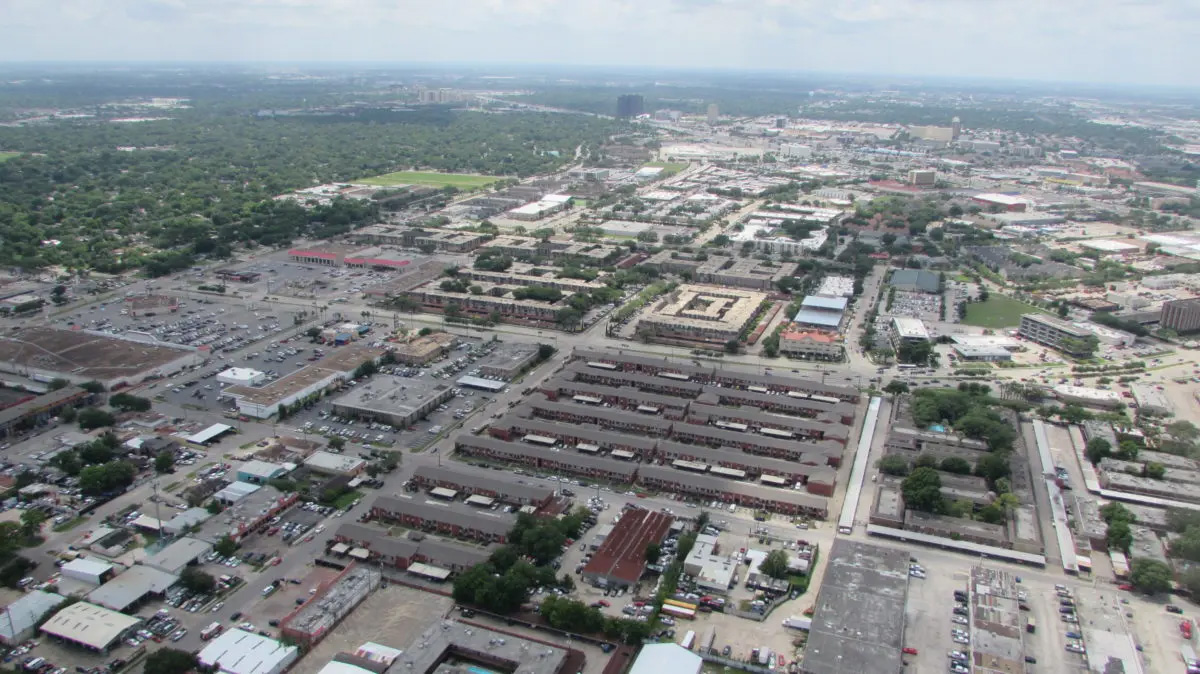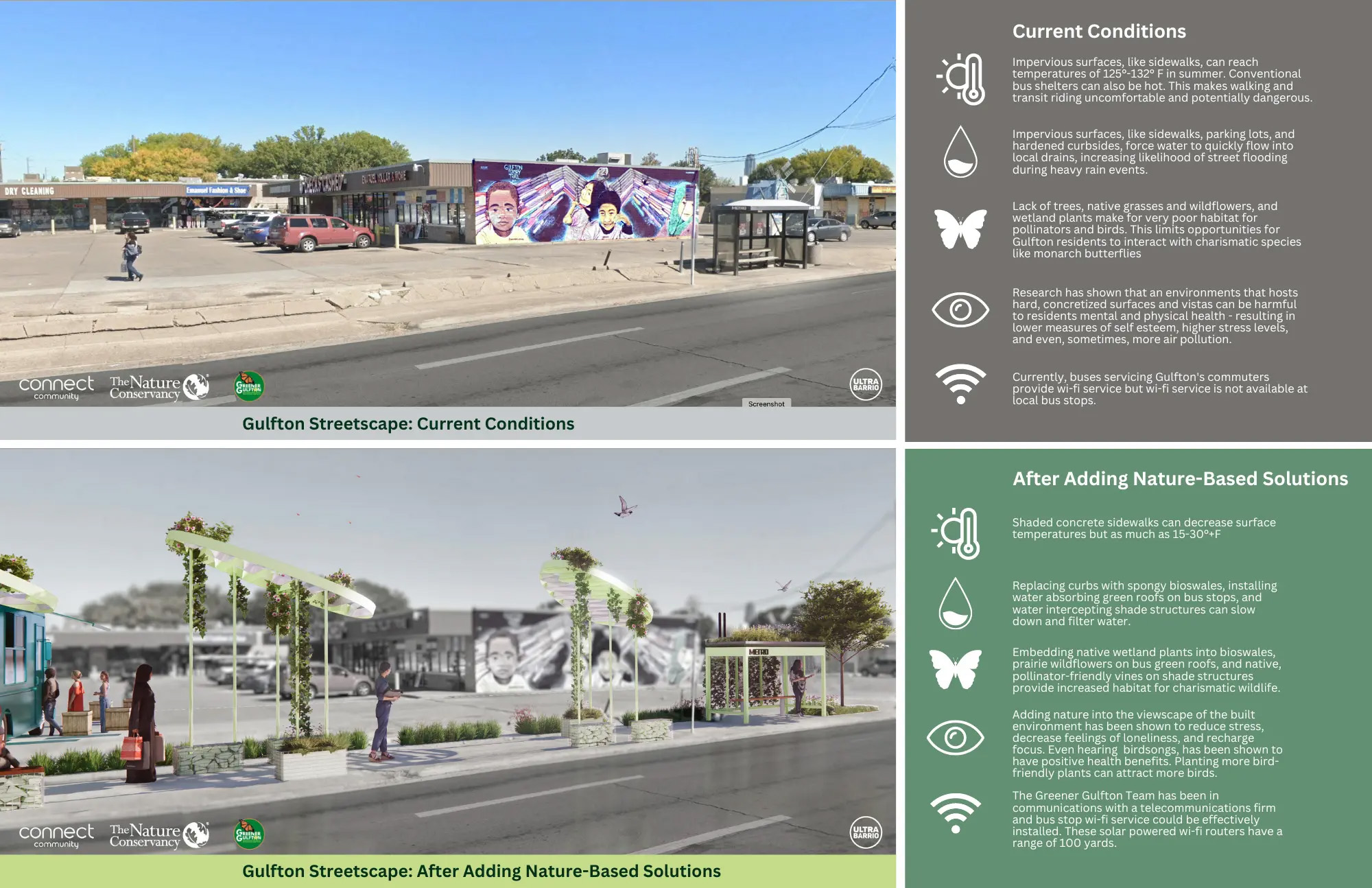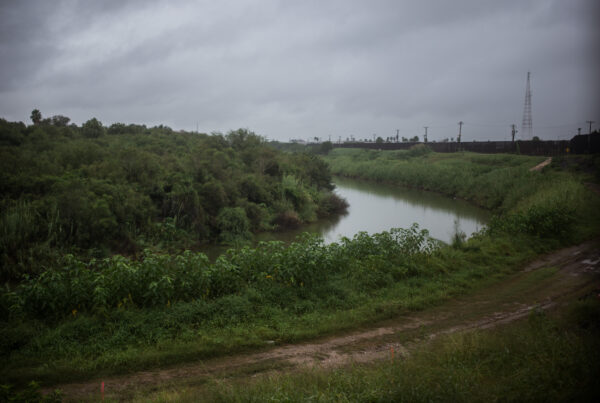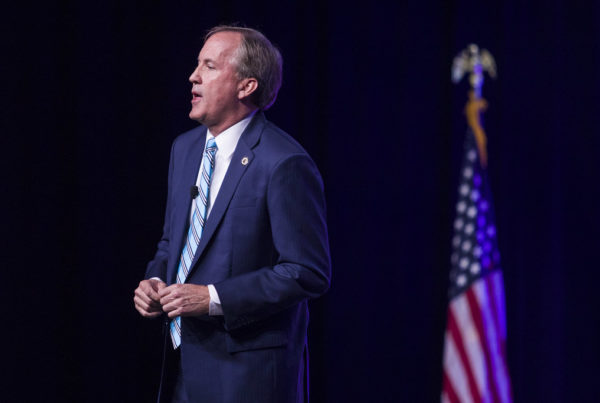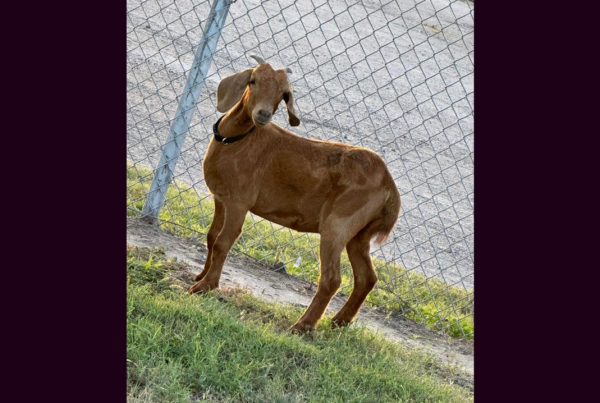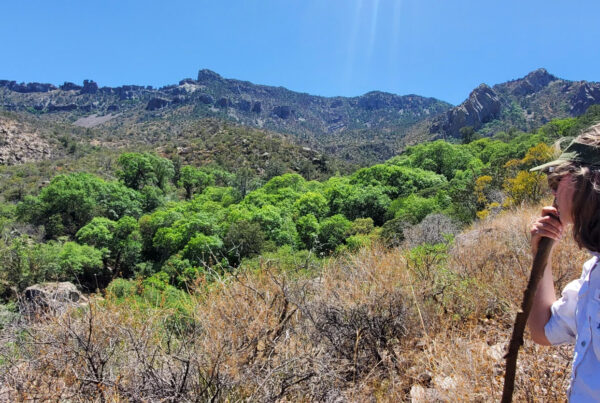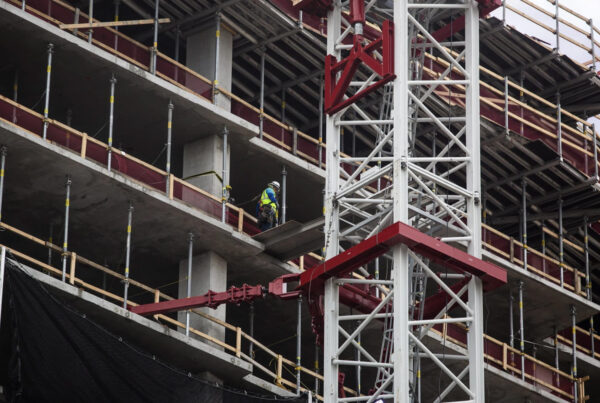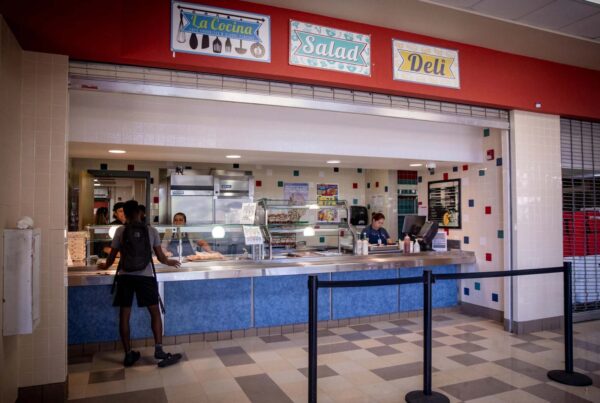Mornings on the corner of Gulfton and Rampart Streets are bustling. It’s one of the busiest intersections in the neighborhood, according to Sandra Rodriguez, President of the Super Neighborhood in Gulfton, where she has lived most her life.
“You’ll find a lot of people walking through here to drop off their kids at school or walking in the opposite direction to get to the grocery store or the only park that we got,” Rodriguez said.
This part of Southwest Houston is one of the most transit dependent neighborhoods in the city, according to the latest equity report from LINK Houston. Unlike many other parts of Harris County, the foot traffic, whether to get to a bus stop or elsewhere, is visible.
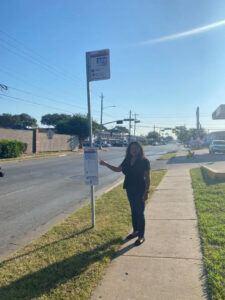
Sandra Rodríguez, president of the Gulfton Superneighborhood Council, stands by one of the many unshaded bus stops in Gulfton. Katie Watkins / Houston Public Media
Rodriguez pointed out the hazards that drivers might gloss over, but that are glaringly obvious to pedestrians traversing the paths — a dearth of trees, narrow sidewalks and a bus stop without any shade. Rodriguez said the demand is high for a more walkable community.
“You can feel it [the heat] right now and it is 11 o’clock,” said Rodriguez on June 19th, a day when the heat index reached 115 degrees in the afternoon. “It’s not even the hottest point of the day, but you can already feel the heat.”
A 2020 heat mapping study run by the National Oceanic and Atmospheric Administration (NOAA) measured temperatures across Houston on one of the hottest days of the summer. Researchers found that Gulfton was the hottest neighborhood in Houston, in some instances 17 degrees hotter than other parts of town.
In parts of Gulfton, just 4% of the area is shaded with trees, compared to areas like West University where the tree canopy covers more than 40% of the city, according to an analysis of data by Rice University’s Kinder Institute for Urban Research.
In recent years, about a half dozen organizations from outside Gulfton have teamed up with locals to improve the neighborhood, with a focus on incorporating nature to make the area cooler and more walkable.
Trees have been a main focus of the Greener Gulfton Plan, developed by the Nature Conservancy and several community groups. A recent study by Texas A&M Forest Service showed only 800 spots for new trees — roughly a 2 to 3 percent increase in tree canopy in the area.
Scrunched up sidewalks and the overabundance of concrete leaves little room for trees to grow. At least three feet of planting space is needed to allow a tree to thrive.
Jaime Gonzalez with the Nature Conservancy said that 800 trees is a good first step, but not enough to cool down the neighborhood. The need for shade is only growing as temperatures and humidity grow more intense in the wake of climate change.
“I think that there’s a lot of challenges for planting in a place like Gulfton,” said Gonzalez. “So there’s going to have to be a mixture of both tree planting and shade structures to really get to a more equitable solution for the neighborhood.”
A local architect firm, Ultrabarrio, created a mock up design that could provide shade on walkways too narrow for a tree. It includes a set of white trellises that could be adjusted to the size of the sidewalk. These would likely be placed on streets with high pedestrian traffic or areas around bus stops that can’t fit a standard shelter.


